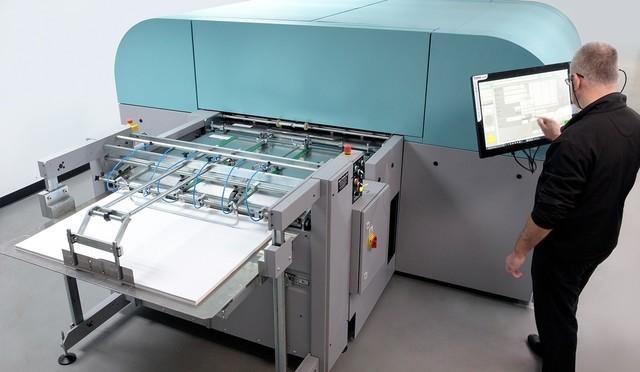What determines the quality of a production inkjet print? This is a complex question that cannot be answered simply by looking at the published device specification sheet. Many machine manufacturers tout higher and higher printhead resolutions and make many sales pitches around inkjet print quality. Yes, resolution is a factor, but it's only part of the print quality equation. As discussed in our recently published "Understanding the Grey Area of Inkjet," even the term "resolution" can be confusing in the context of inkjet print quality.

If you try to compare inkjet printheads with traditional offset printing, the discussion becomes even more confusing. Comparing a traditional wire mesh or line per inch (LPI) to the number of nozzles per inch (NPI) of an inkjet printhead is inaccurate. The printheads on the inkjet devices used today are either interlaced or much higher than traditional LPI measurements, resulting in a higher number of nozzles per inch of measurement.
Any discussion of inkjet print quality must include a combination of resolution, minimum and maximum drop sizes, droplets per point (DPD), grayscale, and bits per pixel that can be processed by the nozzle itself. The actual performance of the printhead is a considerable part, and for printhead health, nozzles, satellite control, waveforms, and crossover process density play an important role in controlling the uniformity and position of each drop of ink.
Then there's the ink. The ink chemistry itself and its compatibility with the nozzle, the compatibility of each color with other process colors, the type of colorant, the load of the colorant, the wetting capacity, the correct spraying, drying or curing requirements all affect quality.
Of course, it is impossible to assess the print quality of the device without printing something. Therefore, substrates and inks must also have a certain range of compatibility. Substrates may require pretreatment or primer to control surface tension to keep the colorant on the surface and adhere to the surface (proper wetting and controlling absorption, drying, and curing. Proper adjustment of each primary color and above always requires the identification of all TAC to avoid spots, core suction, coalescing, penetration, curling, wrinkles, adhesion, and drying/curing issues.
In addition to the type of substrate to consider, there is also substrate movement. This is an important difference in equipment, but it doesn't always get the consideration it deserves. Motion control when the substrate moves under the printhead is just as important as the printhead itself. Registration, repeatability, time and distance from head to substrate can greatly affect droplet size and spray patterns, and can create an uneven appearance if set up improperly.
Another very important aspect is the Raster Image Processor (RIP). RIP, or front end, is really the beginning of a highly complex process of machines, printheads, inks and substrates. RIP is a resolution-specific dither pattern and color plane that the rippers accurately convert files into that the print engine sends to each printhead. Each color plane communicates with the print engine, when and where the print head drops a drop, and the volume each drop should have.
All of the above items will determine the final print quality, but will also affect the overall color quality. The correct color management depends on the long list of variables described above, determining the maximum process color saturation, as well as the total TAC when combining all colors, creating a reproducible color gamut for the machine, printhead, ink, and substrate.
We now know that discussing inkjet print quality requires going beyond resolution and gaining a deeper understanding of the many components that make up inkjet technology, and their overall performance on a particular substrate.
(7860973)